| << Chapter < Page | Chapter >> Page > |
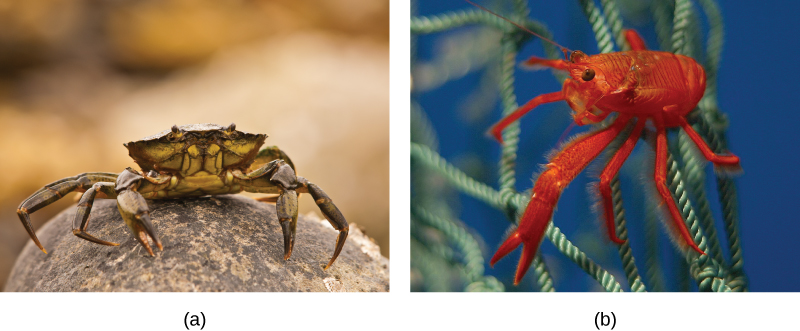
Crustaceans possess two pairs of antennae, mandibles as mouthparts, and biramous (“two branched”) appendages, which means that their legs are formed in two parts, as distinct from the uniramous (“one branched”) myriapods and hexapods ( [link] ).
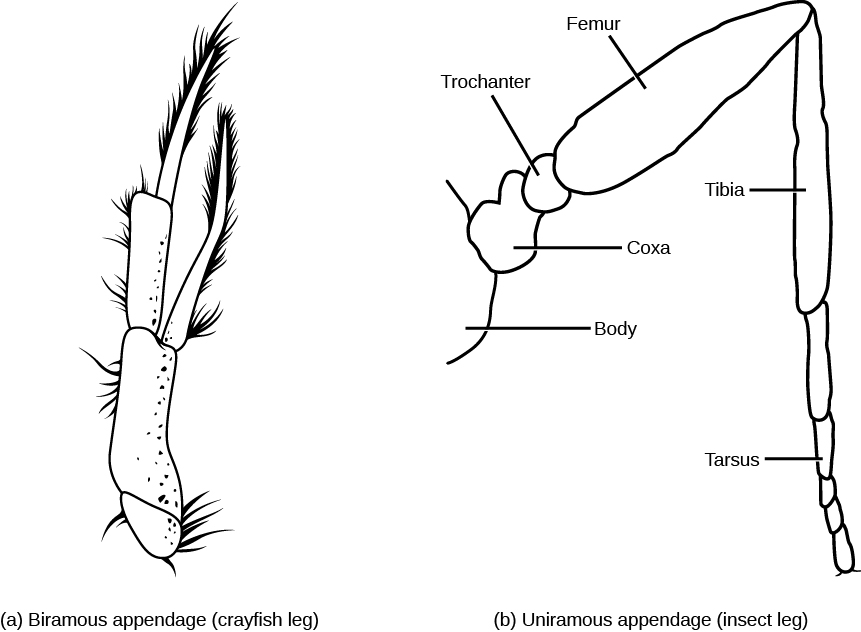
Unlike that of the Hexapoda, the head and thorax of most crustaceans is fused to form a cephalothorax ( [link] ), which is covered by a plate called the carapace, thus producing a body structure of two tagma. Crustaceans have a chitinous exoskeleton that is shed by molting whenever the animal increases in size. The exoskeletons of many species are also infused with calcium carbonate, which makes them even stronger than in other arthropods. Crustaceans have an open circulatory system where blood is pumped into the hemocoel by the dorsally located heart. Hemocyanin and hemoglobin are the respiratory pigments present in these animals.

Most crustaceans are dioecious, which means that the sexes are separate. Some species like barnacles may be hermaphrodites . Serial hermaphroditism, where the gonad can switch from producing sperm to ova, may also be seen in some species. Fertilized eggs may be held within the female of the species or may be released in the water. Terrestrial crustaceans seek out damp spaces in their habitats to lay eggs.
Larval stages— nauplius and zoea —are seen in the early development of crustaceans. A cypris larva is also seen in the early development of barnacles ( [link] ).
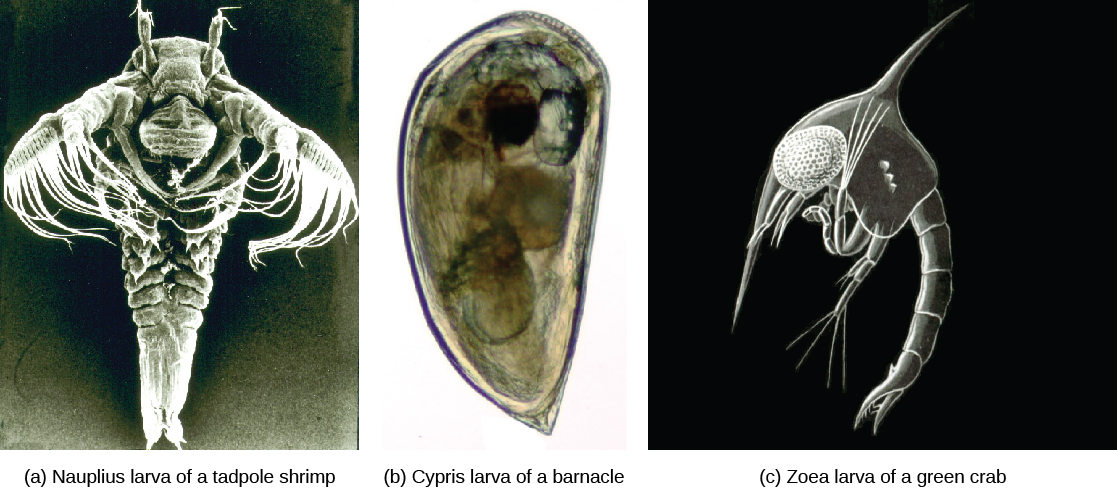
Crustaceans possess a tripartite brain and two compound eyes. Most crustaceans are carnivorous, but herbivorous and detritivorous species are also known. Crustaceans may also be cannibalistic when extremely high populations of these organisms are present.
This subphylum includes animals such as spiders, scorpions, horseshoe crabs, and sea spiders. This subphylum is predominantly terrestrial, although some marine species also exist. An estimated 77,000 species are included in subphylum Chelicerata. Chelicerates are found in almost all habitats.
The body of chelicerates may be divided into two parts: prosoma and opisthosoma, which are basically the equivalents of cephalothorax (usually smaller) and abdomen (usually larger). A “head” tagmum is not usually discernible. The phylum derives its name from the first pair of appendages: the chelicerae ( [link] ), which are specialized, claw-like or fang-like mouthparts. These animals do not possess antennae. The second pair of appendages is known as pedipalps . In some species, like sea spiders, an additional pair of appendages, called ovigers , is present between the chelicerae and pedipalps.
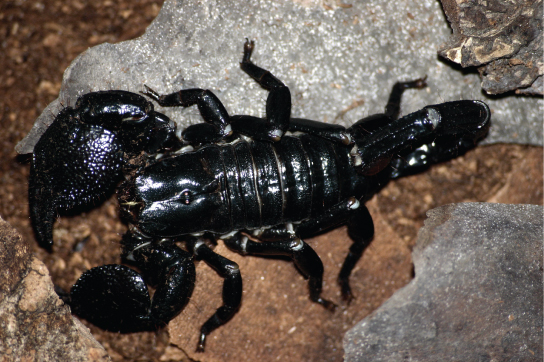
Chelicerae are mostly used for feeding, but in spiders, these are often modified into fangs that inject venom into their prey before feeding ( [link] ). Members of this subphylum have an open circulatory system with a heart that pumps blood into the hemocoel. Aquatic species have gills, whereas terrestrial species have either trachea or book lungs for gaseous exchange.
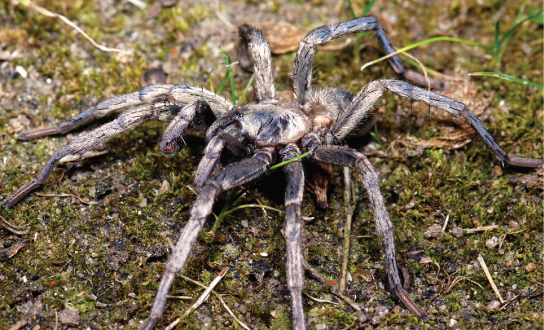
Most chelicerates ingest food using a preoral cavity formed by the chelicerae and pedipalps. Some chelicerates may secrete digestive enzymes to pre-digest food before ingesting it. Parasitic chelicerates like ticks and mites have evolved blood-sucking apparatuses.
The nervous system in chelicerates consists of a brain and two ventral nerve cords. These animals use external fertilization as well as internal fertilization strategies for reproduction, depending upon the species and its habitat. Parental care for the young ranges from absolutely none to relatively prolonged care.
Visit this site to click through a lesson on arthropods, including interactive habitat maps, and more.
Nematodes are pseudocoelomate animals akin to flatworms, yet display more advanced neuronal development, a complete digestive system, and a body cavity. This phylum includes free-living as well as parasitic organisms like Caenorhabditis elegans and Ascaris spp., respectively. They include dioeceous as well as hermaphroditic species. Nematodes also possess an excretory system that is not quite well developed. Embryonic development is external and proceeds via three larval stages. A peculiar feature of nematodes is the secretion of a collagenous/chitinous cuticle outside the body.
Arthropods represent the most successful phylum of animal on Earth, in terms of the number of species as well as the number of individuals. These animals are characterized by a segmented body as well as the presence of jointed appendages. In the basic body plan, a pair of appendages is present per body segment. Within the phylum, traditional classification is based on mouthparts, number of appendages, and modifications of appendages present. Arthropods bear a chitinous exoskeleton. Gills, trachea, and book lungs facilitate respiration. Sexual dimorphism is seen in this phylum, and embryonic development includes multiple larval stages.
[link] Which of the following statements about insects is false?
[link] C

Notification Switch
Would you like to follow the 'Biology' conversation and receive update notifications?